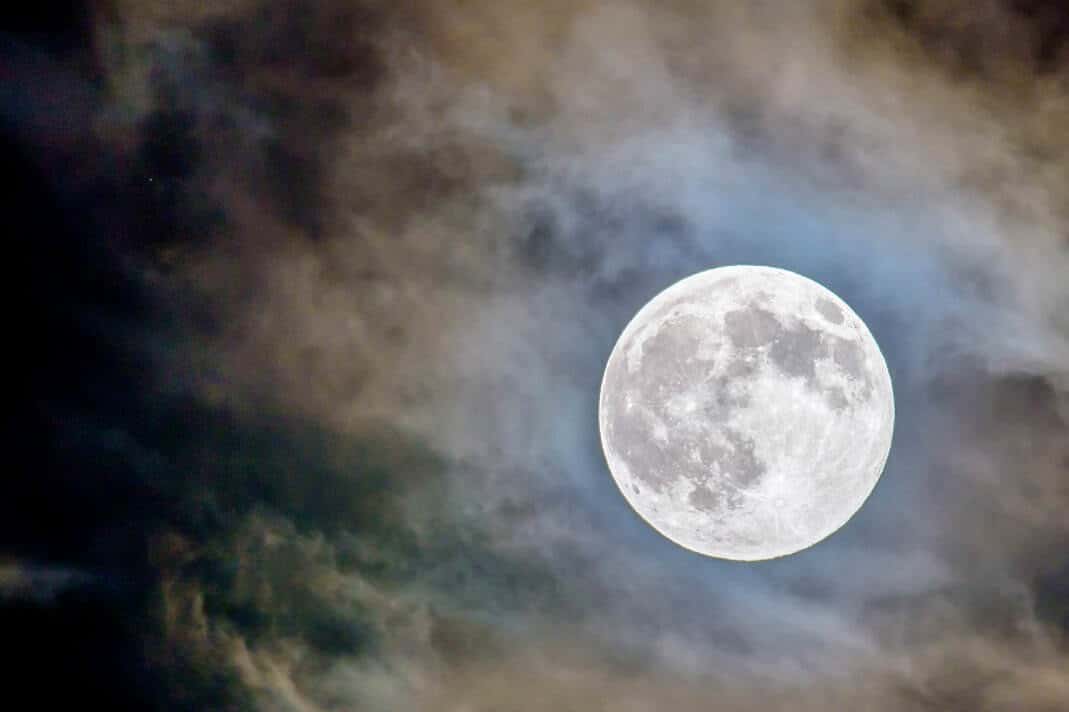Following the new moon phase, when the moon takes on a crescent shape in the evening sky, there is occasionally a subtle radiance across the rest of the lunar surface. While the crescent glows in a vibrant yellow hue, the remaining disk appears a muted shade of gray. This radiance is faint, only visible when the atmosphere is clear and pure, which is not always the case in urban areas. The best conditions to observe this radiance are during twilight, when the contrast between the illuminated and shadowed sides of the moon is less pronounced. This phenomenon is commonly referred to as ashen moonlight.
It presents a captivating sight, as evidenced by this stunning photograph!
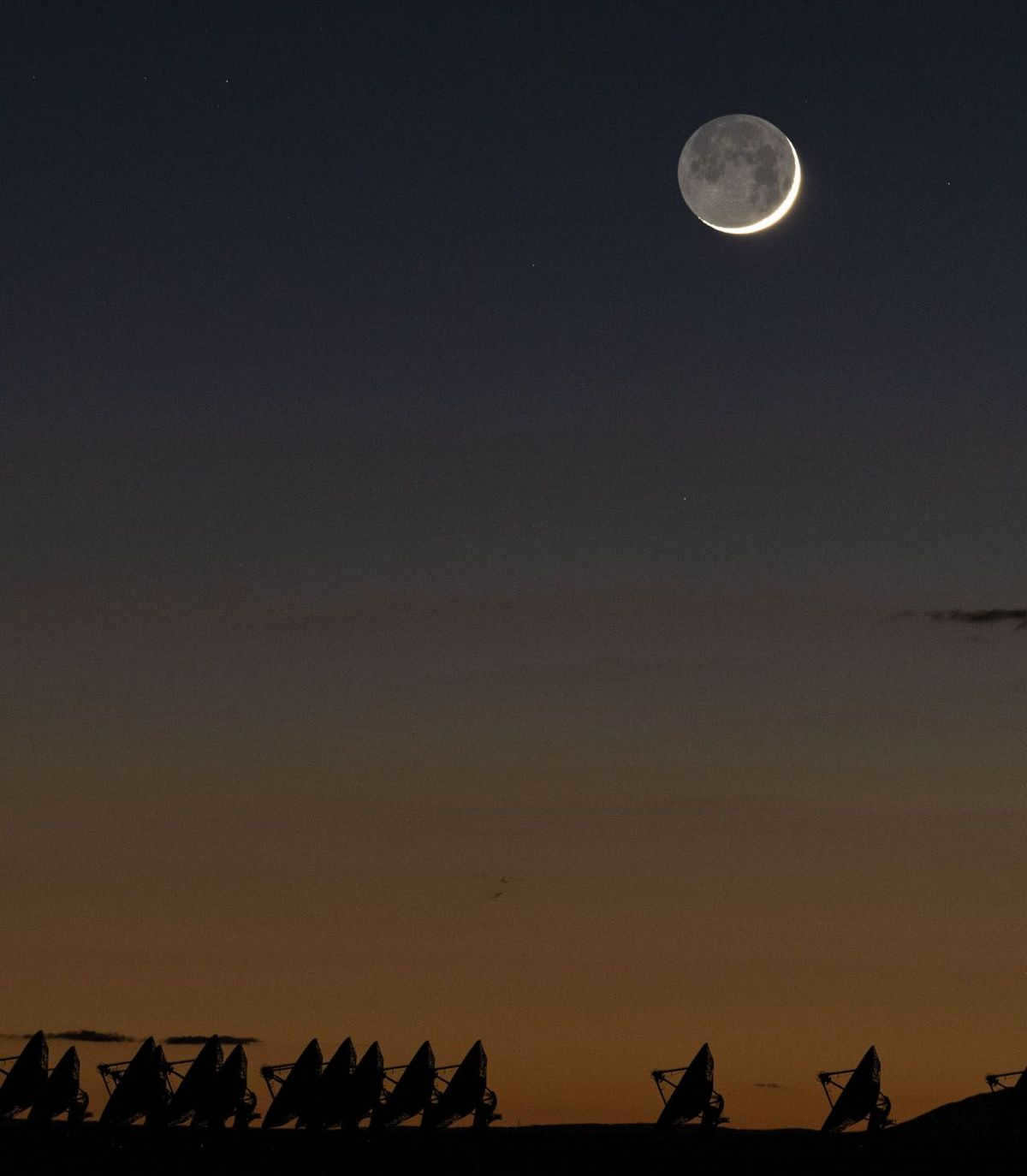
It is worth noting that the moon’s ash light is characterized by a distinct phenomenon where only the narrow crescent is brightly illuminated and vibrant, while the remainder of the moon’s disk appears gray and ashy in comparison. Interestingly enough, this same phenomenon can also be observed in the morning sky when the moon is situated in the eastern horizon, taking on the appearance of an aging crescent.
What Causes the Moon’s Pale Glow?
You may be aware that the appearance of the Moon changes each day, sometimes appearing as a crescent, other times as a fully illuminated disc. These changes occur because the angle at which the Sun’s light reaches the Moon varies from our perspective on Earth. When the Moon is in the sky near the Sun, it appears as a crescent shape, as only the edge of the Moon’s surface that is lit by the Sun is visible to us.
As a result, the remaining part of the Moon’s surface facing us is not directly illuminated by the Sun. So, what causes the pale glow that we see on the unlit portion of the Moon? Why does the dark side of the Moon, although weakly, emit a faint light? And why is this ashy glow much dimmer than the rest of the Moon?
To address these inquiries, let’s envision ourselves on the far side of the Moon, the region that radiates ash-hued illumination. The Sun remains hidden from view – it lies beyond the horizon, and a multitude of stars are scattered across the inky black sky. However, what immediately grabs one’s attention is none other than our planet Earth, a sphere that looms nearly four times larger than the Moon in our own celestial sphere. Simultaneously, the majority of the Earth is awash in sunlight, appearing in a phase akin to a “full-earth” in the lunar sky. The Sun’s rays reflected by our planet are so luminous that one could conceivably read books on the Moon during this time.
Therefore, the pale glow of the Moon is simply the reflection of the Earth’s light. Is it the light that bounces off the Earth? Absolutely! That is why it is referred to as earthshine in English literature. It is important to note that our planet does not emit its own light; instead, it reflects a portion of the sunlight that reaches it. When we observe the pale glow, we are essentially witnessing the Sun’s light being reflected twice – first by the Earth and then by the Moon! In a complex manner, the sunlight returns to us even on the night side of the Earth (since we perceive the pale glow when the Sun is below the horizon)!
What causes the ashy light to appear dimmer compared to the rest of the satellite’s glow?
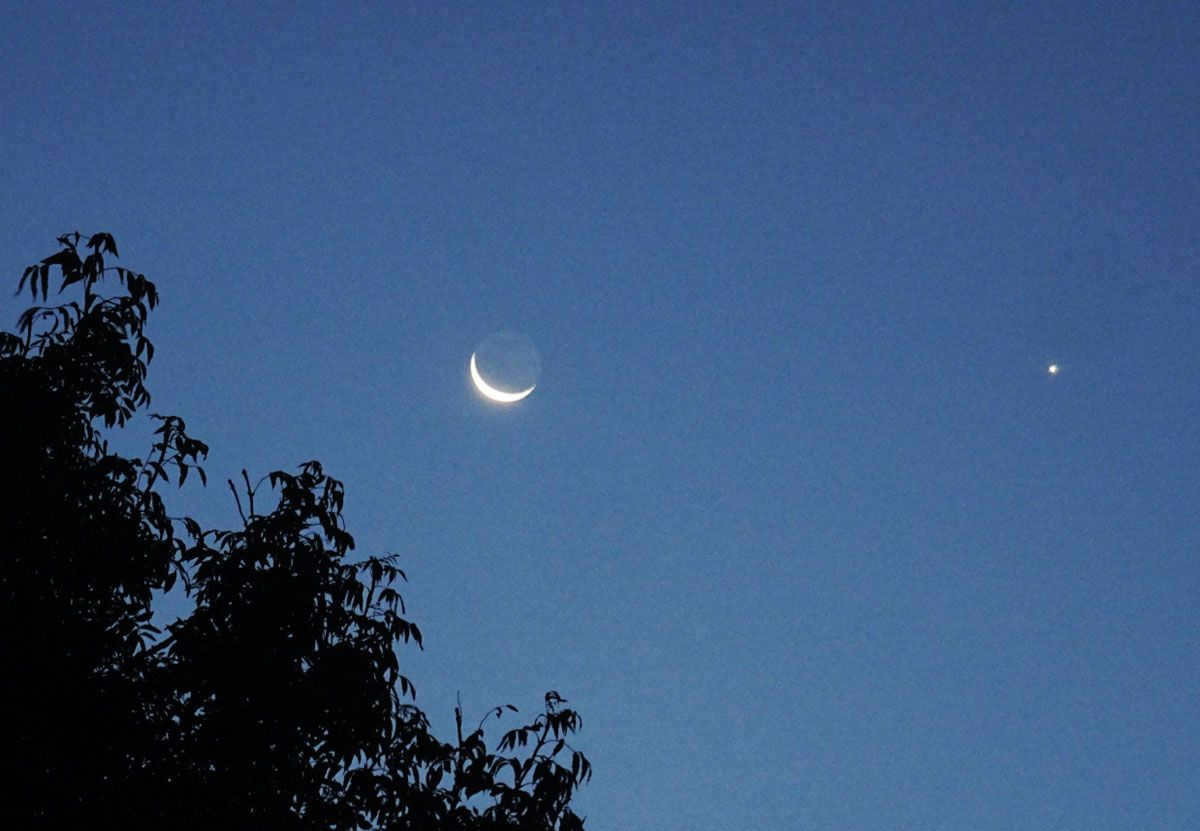
In the morning sky on October 14, 2020, there was a beautiful sight of the Moon and Venus. It is worth noting that we could observe not only the crescent shape of the Moon, but also its faint glow known as ash light, which is the dim illumination of the non-sunlit part of the Moon. The photo captured by James Roger Samworth showcases this stunning celestial event.
An interesting fact is that the Earth reflects significantly more light than the Moon. By measuring the intensity of ash light, scientists have calculated that the Earth appears 64 times brighter in the Moon’s sky compared to how the Moon appears in our sky. This is quite remarkable considering that the area of the Earth in the Moon’s sky is only 14 times larger than the area of the full Moon in our sky. Therefore, it can be concluded that the Earth reflects almost 4.5 times more light than the Moon.
Undoubtedly, the lunar surface consists predominantly of dark rocky formations and regolith. It reflects an average of 12% of the sunlight that reaches it. In contrast, the Earth presents a more diverse range of reflective properties. While bodies of water only reflect 5% of incoming light, green grass and trees reflect 25%, desert sand reflects 30%, and clouds, glaciers, and snow reflect 80-85% of sunlight. The Earth’s reflectivity varies between 32% and 52% depending on the season. (The term used to describe the proportion of light reflected and scattered by a celestial body is “albedo.” The Moon has an albedo of 0.12, while the Earth’s albedo ranges from 0.32 to 0.52.)
It is evident that no matter how radiant the Earth appears in the Moon’s sky, it cannot come close to matching the luminosity of the Sun. Therefore, the moonlight appears significantly dimmer compared to the rest of the Moon’s illumination.
Examining the Moon in ashy illumination
However, ashy illumination enables the unilluminated portion of the Moon to be observed effectively through a telescope. Naturally, the perspective of the nocturnal Moon is somewhat extraordinary, as solely objects with a high albedo are prominent on its surface: the radiant beams emanating from craters such as Tycho and Copernicus, the luminous central slopes of certain craters, luminous spots on the lunar seas, and certain formations like the Aristarchus crater.
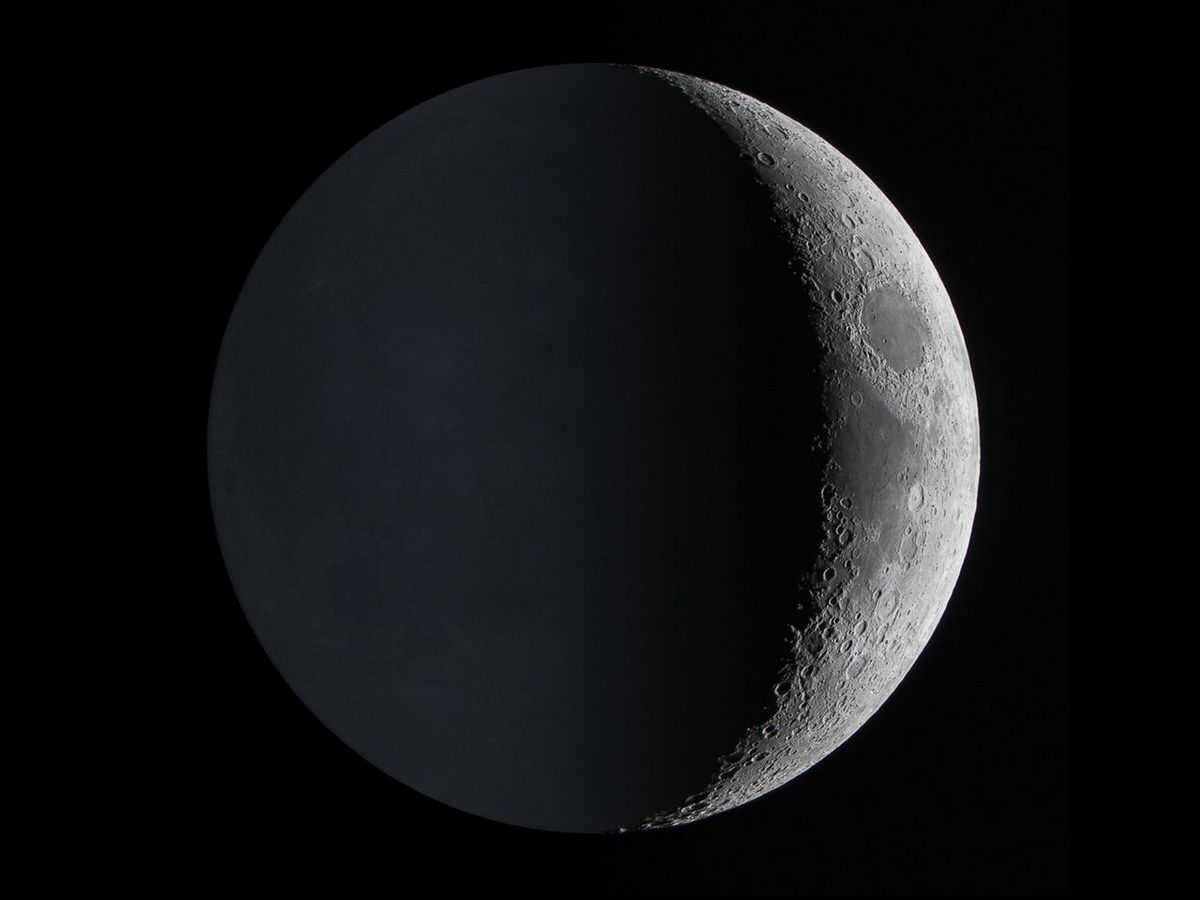
This is approximately the appearance that you can expect to see when observing the Moon through a telescope. The photograph, captured by Dylan O’Donnell for APOD, showcases the ashy light of the Moon.
While the view of the “ashy” part of the Moon might not be particularly striking, it is still beneficial to occasionally observe the unilluminated side of the Moon. This is because it is on the unilluminated side where you are most likely to observe short-term lunar phenomena, also known as SSTs.
What are these phenomena? For instance, there are instances where the brightness of certain objects – such as craters or their areas – unexpectedly increases. These phenomena also encompass the emergence of luminous spots on the Moon’s surface. On average, the duration of observing a SLC is 15 minutes. It is important to mention that despite numerous years of observations, scientists have yet to fully comprehend many of these transient phenomena. The most likely explanations connect the observations of these enigmatic phenomena to meteorite impacts on the Moon and tectonic activities taking place on our natural satellite.
In general, the search and observation of short-term lunar phenomena is a fascinating field of activity for amateur astronomers. However, there is an important consideration. It is essential to thoroughly study the details of the moon’s surface relief in sunlight before delving into the study of the moon in ash light. This will help prevent any misunderstandings. For example, inexperienced observers often mistake the clearly visible crater Aristarchus in ash light for a flash of light.
To conclude, I would like to reiterate that the ash light of the Moon can be seen not only after the new moon, when we observe the “young moon” in the early evenings in the west, but also shortly before the New Moon, when the “Old Moon” is visible in the morning in the east, against the backdrop of the morning dawn.
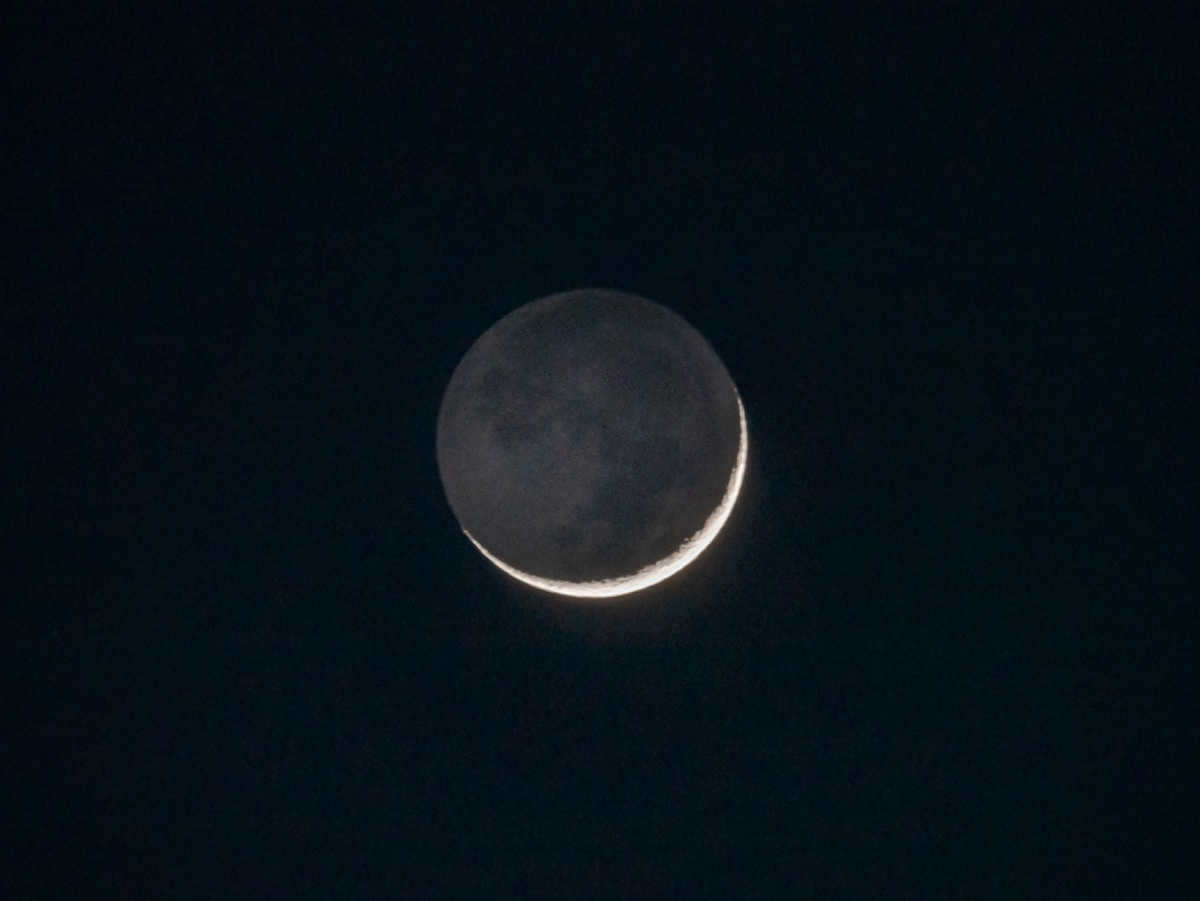
Photographers have the opportunity to capture the dark side of the Moon through photography when it is in both its waxing and waning phases. This phenomenon is commonly referred to as ash light. Many photographers strive to capture this unique ash light in their portraits, as it adds a distinct and captivating element to their work.
In this article, we will provide you with all the necessary information on how to capture single ash light and create stunning portraits that showcase this remarkable lunar phenomenon.
What is the light of ashes?

It is common knowledge that the moon emits light by reflecting the sun’s rays. The moon’s brightness varies depending on its position in relation to the earth and the sun. For instance, when the moon is positioned between the earth and the sun, the illuminated part is not visible to us, resulting in a new moon. Conversely, when the moon is in the opposite position, sunlight fully illuminates the visible part, allowing us to see it.
However, not everyone is aware that the Earth reflects a small amount of light back towards the moon. This reflected light will illuminate the entire visible portion of the moon, regardless of its phase. This phenomenon is known as ash light, as it casts a faint gray outline on the moon’s dark side. The following image will provide a clearer depiction of this.
As you can observe, only a small portion of the moon is illuminated by the sun. This results in a new moon phase, during which only a small fragment of the moon can be seen in the sky. The remainder of the moon remains untouched by the sun’s light and remains in darkness, invisible to us.
Ways to Capture the Essence of Ashen Glow
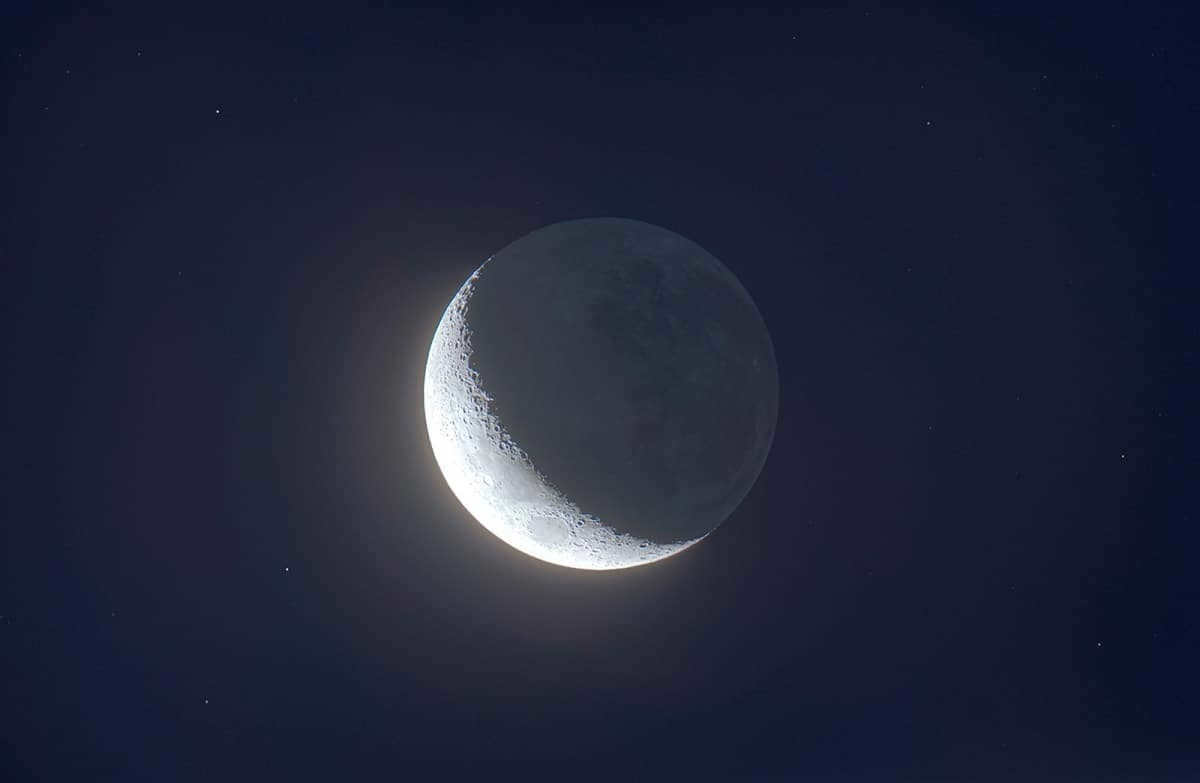
If you have ever ventured out during a full moon, you may have noticed its surprising brightness. The moon appears brighter than it actually is due to the reflection of sunlight. However, the reflected light we see comes from the Earth, making it much dimmer and easily overshadowed by other sources of light.
Therefore, to capture the subtle glow of the moon, it is recommended to observe it when it is thin or in its waxing phase. Sometimes, we can even observe more intricate details in darker areas of the sky when there are small fragments present.
Is it possible to capture the glow of the ash if the moon is bigger? Not necessarily. It is true that you can capture the faint light when the moon is a bit older. However, the higher the moon is, the more sunlight it reflects, resulting in darker areas appearing dimmer and making it more difficult to capture all the intricate details compared to a smaller moon. Due to the intense brightness of the sunlit regions, the shadowy areas lack significant detail, and this issue becomes more pronounced as the moon ages. That is why it is always advisable to photograph the moon when it is at a 10% or lower phase.
Compulsory courses
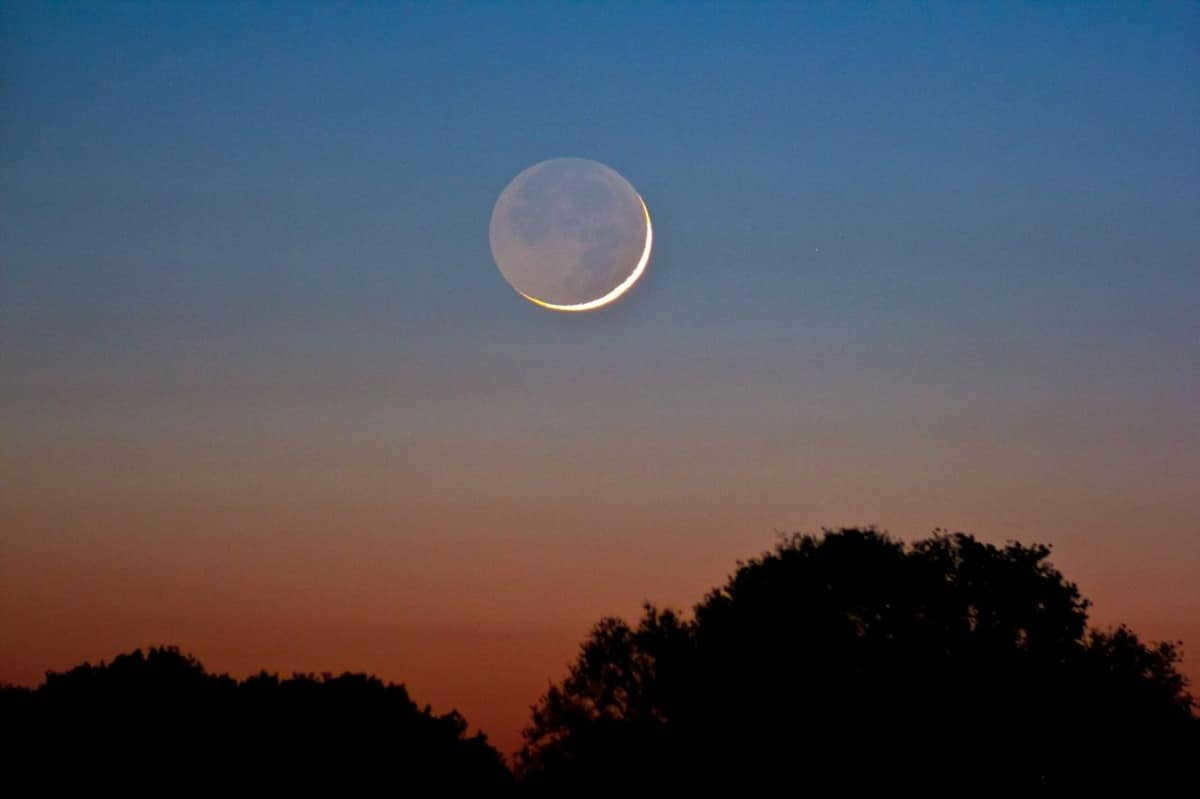
When shooting with a longer focal length, you will be able to observe the intricate details in the hidden areas of the moon. This can be achieved with a telephoto lens, although it is not necessary. Any lens and camera can capture the moon’s ashy light. No professional or high-tech equipment is required.
The key to capturing moonlight lies not in the equipment, but in the parameters we choose for photography. We will discuss this further below.
Undoubtedly, we have become accustomed to properly exposing the moon in order to observe every intricate detail of its craters. However, due to the faint illumination of the ash, if we expose the visible parts of the moon correctly, we will inevitably fail to capture the darker portions. Consequently, we must overexpose the visible section of the moon to capture the subtle light.
To accomplish this, we must operate in manual mode since relying on the camera’s automatic measurements would prove futile since the human eye cannot perceive the grayish light, making it impossible to measure accurately.
While we cannot provide you with specific values to input into your camera settings as each situation varies, we can certainly offer some guidance. As mentioned earlier, our goal is to capture enough light to encompass the grayish illumination, so bear that in mind as you make adjustments to your camera’s parameters.
Crucial configurations
Shutter velocity
When it comes to photographing the moon, it may seem tempting to use a lengthy shutter speed in order to capture ample light. Nevertheless, it’s important to bear in mind that the moon actually moves faster than it appears, which means that excessively long shutter speeds can result in blurry images. While using a wider lens allows for extended exposure times, caution must be exercised when employing longer focal lengths.
Adjusting the Aperture
It may seem tempting to fully open the aperture in order to capture as much light as possible, but this is not always recommended. Firstly, when the lens is set to its widest aperture, it tends to lose a lot of sharpness, resulting in a loss of detail when photographing the moon.
Additionally, a wide aperture significantly reduces the depth of field in a photo, which can affect the overall sharpness of the entire landscape if a wider focal length is used.
A low ISO value is typically recommended to avoid noise, but there are occasions when it becomes necessary to increase it. This is one such situation. We have already discussed how to maximize light using the first two settings. It is crucial to push these settings to their limits in order to capture as much light as possible. However, once we have optimized these parameters, our only option is to raise the ISO until we can successfully capture the faint glow of the moon.
I hope that this information helps you better understand the nuances of low light photography and how to accurately capture it in your images.
The content of this article adheres to our editorial ethics guidelines. To report any issues, please click here.
Full Article Summary: Network Meteorology “Meteorology” Release “Faint Glow of the Moon”
The period of time it takes for all of the different phases of the moon to occur is known as the sidereal month and can last anywhere from 29.25 to 29.83 days. This duration can vary because of the elliptical shape of the Moon’s orbit.
Ash Moon Light
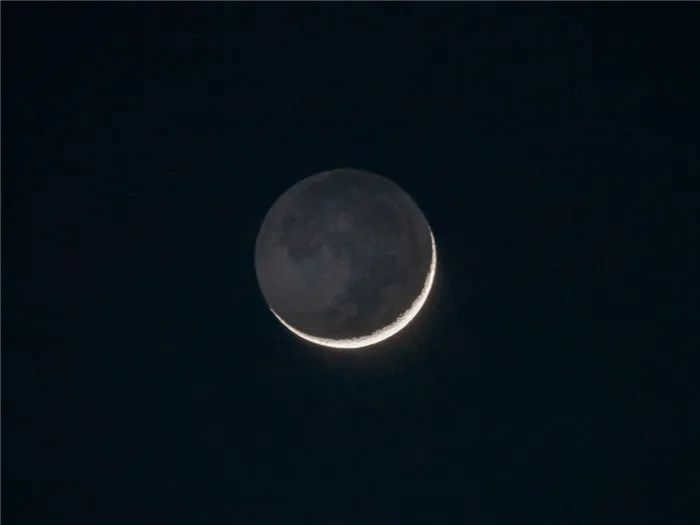
The ash moon is a phenomenon that occurs when we can see the entire moon, even though only a portion of it is being lit up by the sun. The unilluminated part of the moon takes on a distinct ash color.
This phenomenon can be observed right before and right after the new moon, specifically at the beginning of the first quarter and at the end of the last quarter of the lunar phase.
The glow of the moon’s surface that is not directly illuminated by sunlight is created by sunlight that is scattered by the Earth and then reflected back to the Earth by the moon. This means that the path of the ash-colored light of the moon is as follows: Sun -> Earth -> Moon -> Observer’s eye on Earth.

The Codex Leicester manuscript contains a drawing by Leonardo da Vinci of the Moon’s scythe illuminated by ash light.
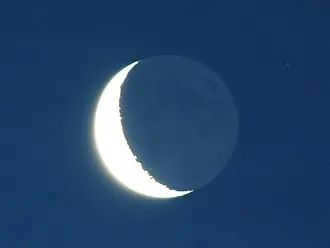
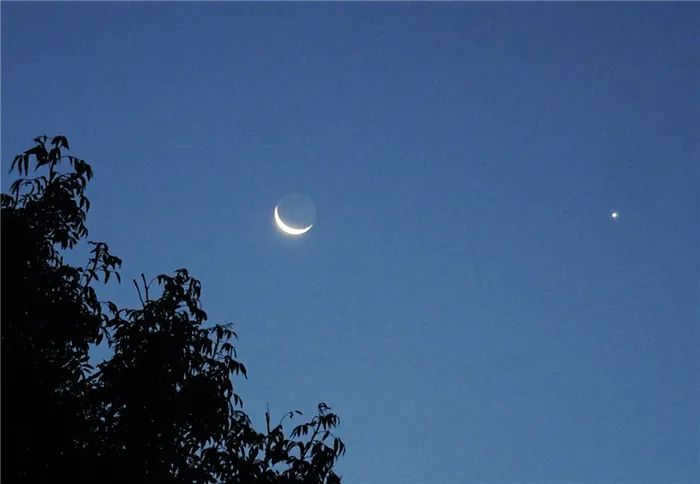
The illuminated area of the moon, known as the bright crescent, receives direct sunlight from the sun. The remaining part of the moon is lit up by the Earth’s reflected light.
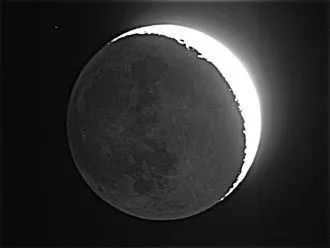
The phenomenon of ash light has been understood since the time of Leonardo da Vinci and Mostlin 1, who was Kepler’s teacher and the first to provide an accurate explanation of it. Mostlin’s explanation was published in Kepler’s Astronomiae pars optica in 1604, while Leonardo da Vinci’s explanation, written a century earlier, can be found in his manuscripts.
In 1850, the brightness of the light emitted by the ash and crescent Moon was first compared instrumentally by French astronomers Arago and Logieux 2.
Photographic studies conducted by G. A. Tikhov at the Pulkovo Observatory have shown that when observed from the Moon, the Earth appears as a bluish disk. This conclusion was later confirmed in 1969.3 Tikhov emphasized the importance of making systematic observations of the Moon’s ash light. These observations serve as an indicator of climate change on Earth.4 Therefore, the observation of the Moon’s ash light can provide valuable insights into our planet’s changing climate.
- ↑ Mestlin, Mikhail // The Encyclopedic Dictionary of Brockhaus and Efron: In 86 volumes (82 vols. and 4 supplements). – St. Petersburg, 1890-1907.
- ↑ Tikhov G.A. Ash Light of the Moon // Nature – № 7 – 2010. – P. 78-80.
- ↑ Man on the Moon
- ↑ The ashy glow of the Moon contradicts global warming.
Everyday Events
Everyday events are special occasions and significant dates. Discover today what is in store for tomorrow!
The ash light (also known as the ash moon) refers to a faint glow observed on the dark side of the Moon, which can be the entire unlit portion or just a part. This phenomenon occurs when sunlight reflects off the Earth and illuminates the Moon.
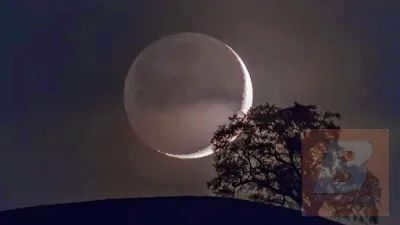 |
| The Ash Moon Phenomenon |
This phenomenon is referred to by several names, including planetary glow, ash glow, old moon in the arms of the new moon, and da Vinci glow (due to Leonardo da Vinci being the first to provide an explanation for this occurrence in the early 16th century).
The reason behind the faint glow in the typically dark portion of the moon can be attributed to the reflection of sunlight, which occurs twice – first from our planet and then from the moon’s surface. As a result, the glow is not as bright as the direct illumination from the sun on the crescent where the star’s rays directly fall.
When the Ash Moon Appears:
The occurrence of the ash moon can be witnessed twice a month: specifically, around 3 days prior to the new moon (during the final quarter) and shortly after the new moon (at the start of the first quarter).
The ash moon showcases its utmost beauty just after dusk or right before dawn.
Researchers have also made an intriguing discovery that the sun’s rays reflect most intensely off the Earth during the months of April and May each year. Consequently, for the year 2022, the prime moments to observe the Ash Moon are on April 27 and 28, 2022, May 2 and 3, 2022, May 27 and 28, 2022, and June 1 and 2, 2022.
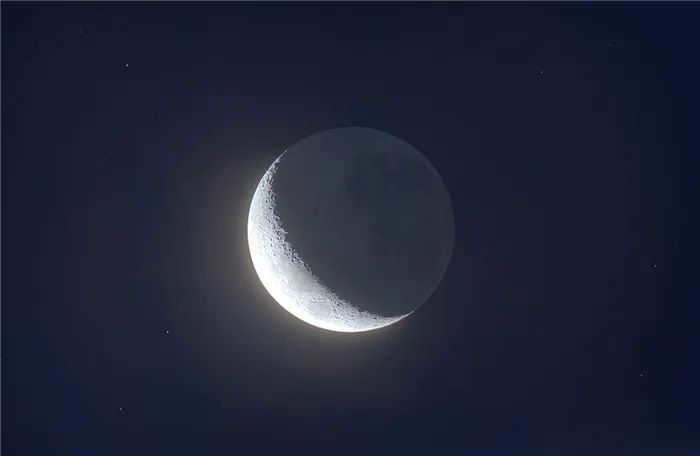
If you have ever experienced a night with a full moon, you may have observed that the moon appears to be brighter than usual. This is because, after being in darkness for some time, our eyes adjust and we are able to see better, thanks to the sunlight that is reflected by the moon. However, the moon’s light is actually reflected from the Earth, which makes it much weaker and less noticeable compared to other sources of light.
Therefore, in order to capture the subtle brightness of the moon, it is recommended to observe it when it is in a crescent phase or just beginning to rise. Sometimes, we may be able to see more details in darker areas of the moon if there are small patches of clear sky.
Does this imply that if the Moon is larger in size, we will lose the opportunity to capture the luminous remnants? Not necessarily. Indeed, we can still capture a faint luminosity when the Moon reaches a slightly larger size. However, as the Moon rises higher in the sky, it reflects more light from the sun, causing the dark regions to appear even darker and making it more challenging to capture all the intricate details compared to a smaller moon. Due to the intense brightness of the sunlit areas, minimal details are captured in the shadowed regions, and this issue becomes more pronounced with a larger moon. Hence, it is always advisable to photograph the moon when it is at or below 10% illumination.
What you will require
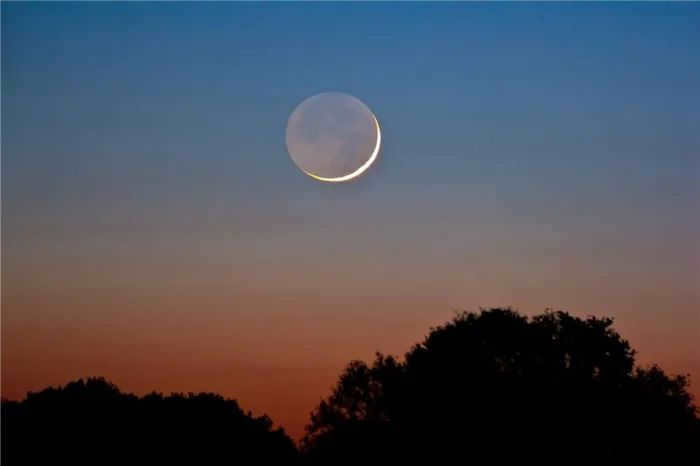
However, the greater the focal length, the more intricate details of the Moon’s hidden regions you’ll be able to observe, making it an excellent choice for a telephoto lens. You don’t necessarily need a telephoto lens, though. The soft glow of the moon can be captured using any camera and lens. You don’t require professional or high-tech equipment.
The key to capturing moonlight lies not in the gear, but in the settings we use for taking photographs. We will delve into this topic further below.
That’s why we have to manually work when the camera metering is ineffective because the human eye cannot perceive gray light, making it impossible to measure.
Unfortunately, we cannot provide specific values for input parameters as each situation is individual, but we can offer some suggestions. As mentioned earlier, it is important to capture sufficient light to render gray tones accurately. Therefore, please bear this in mind when adjusting your camera settings.
Important settings
Shutter speed
In order to effectively capture a significant amount of light, one might initially consider utilizing a slower shutter speed. However, it is important to note that the moon’s movement is faster than it appears, therefore extremely short shutter speeds should be avoided to prevent the occurrence of flicker. It is worth mentioning that the wider the lens, the more leniency there is in terms of selecting a slower shutter speed. However, caution should be exercised when using longer focal lengths.
Adjusting the Aperture
One might be tempted to fully open the aperture in order to capture the maximum amount of light, but this approach is not always recommended. Firstly, when using larger apertures, the lens tends to lose sharpness, resulting in a loss of detail when photographing the moon.
Furthermore, widening the aperture excessively significantly reduces the depth of field in the image, potentially affecting the overall sharpness of the entire landscape if a longer focal length had been used.
ISO sensitivity
Typically, it is recommended to use a low ISO value to avoid noise. However, there are certain situations where you may need to increase it. This is one of those cases. We have discussed how to optimize the first two parameters to maximize the amount of light. However, once we have determined these settings, the only option left is to raise the ISO until we can capture the faintest light of the moon.
By understanding this information, you will gain valuable knowledge on capturing ash light in your photographs.
This article adheres to our editorial ethics policy. If you find any mistakes, please click here to report them.
Full Article Path: Network Meteorology “Meteorology” Ash Light
What is the reason for the Moon’s ash light being less bright than the illumination of the remaining part of the Moon directly following a new moon?
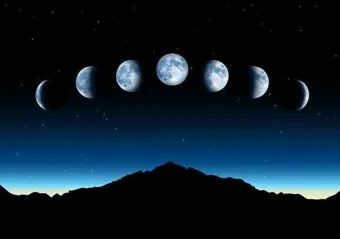
Answer: The reason for the ashy color of the Moon is the reflection of light from our planet Earth.
Nevertheless, the remaining part of the Moon is lit up by the sun.

Given that the Earth is spherical and projects a circular shadow onto the Moon, what is the reason for our perception of only half of the lunar surface?
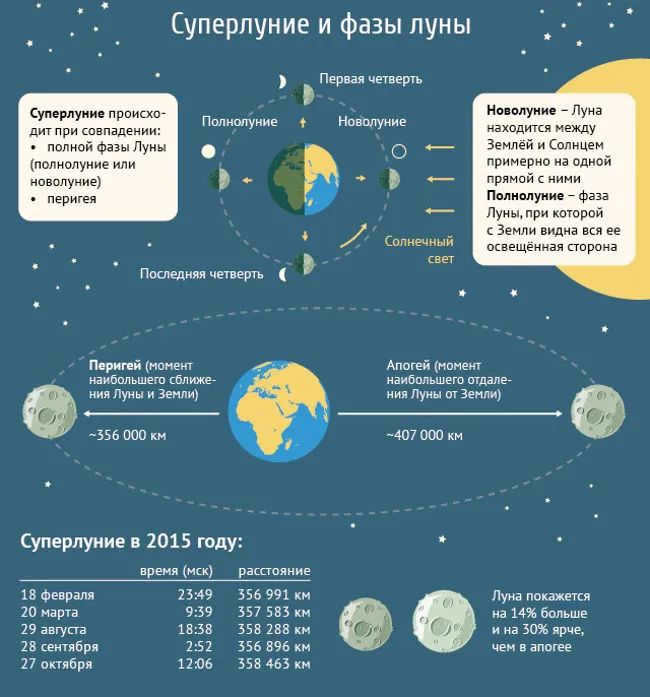
What causes the reflection of the Moon on the surface of water?
If you are wondering why the Moon’s ashy light appears fainter than the rest of its light shortly after a new moon, you can find answers to similar questions in the Physics category using the automatic smart search. If you still have uncertainties after reviewing all the answer choices, or if the provided information does not fully address the topic, feel free to create your own question using the button at the top of the page or discuss it with other visitors.
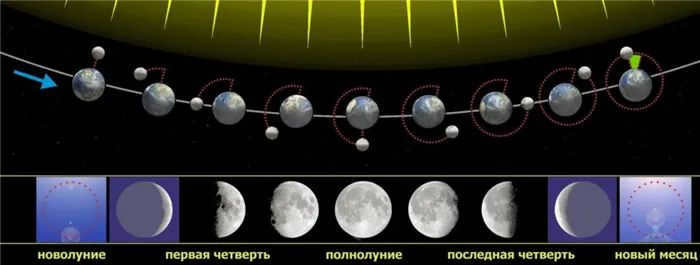
There are 74 stamps. Maybe it looks something like this.
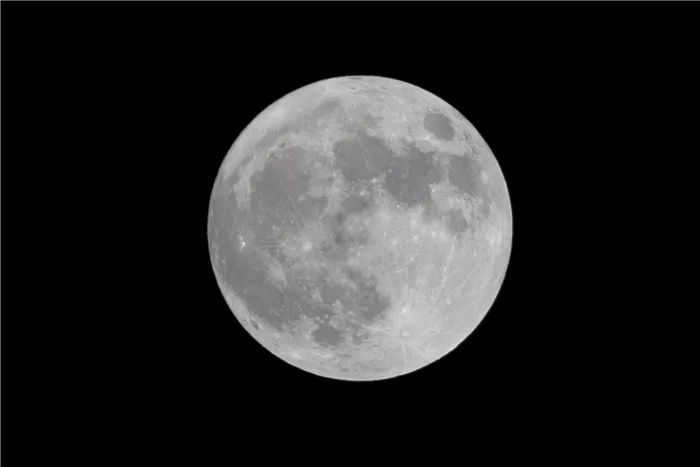
The size of the top base of the cone doesn’t matter. A force of mg is exerted on the side of the lower table top, which is spread over an area Sa. You just need to convert the area to square meters, Sa = 4 cm² = 4 / 10000 m² = 0.0004 m². P = mg /…
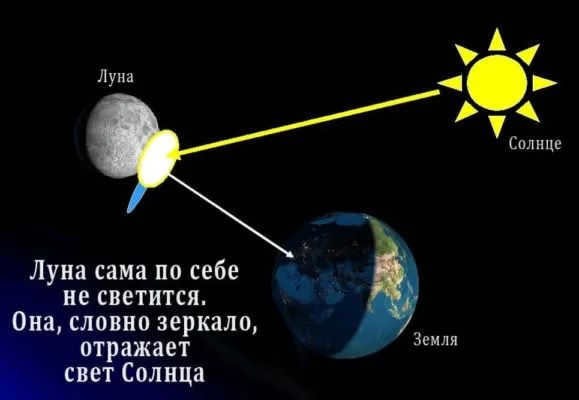
The reason for the lunar ash light is that the kettlebell moves a distance equal to four widths in PERIOD: L₀ = 4 * 3 = 12 cm or 0.12 m. Therefore, the number of oscillations is: n = L = L / L₀ = 0.36 / 0.12 = 3. The answer is 3 oscillations.

The calculation Q = λ * m results in 1320000J or 1320 kJ.
To find the mass m, we can use the equation Q = m * λ, which gives m = Q / λ = 0.1 kg for 100 grams of lead.
Given V = 72 km/h = 20 m/s, we can calculate the acceleration as a = V² / R = 20² / 500 = 0.8 m/s². The net force N can be found using the equation N = m(g – a) = 500×(10 – 0.8) = 4600 N (or 4500 N if we take g to be 9.8 m/s²).
Using the equation 0.3 * m1 = N * 0.2 and 0.1 * N = 0.3 * M, we can solve for m1 and M. The result is m1 = 2M and M = 1.2 kg.
The difficulty in working with displacement, velocity, and acceleration is due to the fact that they are vector quantities, which require more complex calculations compared to working with projections.
© 2000-2022. This content cannot be replicated entirely or partly without proper citation. 16+ This site is safeguarded by reCAPTCHA technology and is subject to Google's Privacy Policy and Terms of Use.
Ash Moonlight – The occurrence where the Moon appears whole despite only a portion of it being illuminated by the Sun. In this instance, the unilluminated part of the Moon’s surface displays a distinct ash color.
This phenomenon is observed shortly before and after the new moon (during the beginning of the first quarter and the end of the last quarter of the Moon’s phases).
The Moon’s surface that is not directly illuminated by sunlight emits a glow caused by sunlight that is scattered by the Earth and then reflected back to the Earth by the Moon. Therefore, the path of the Moon’s dim light photons is as follows: Sun -> Earth -> Moon -> the eye of an observer on Earth.
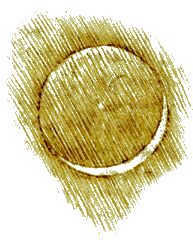
The ash light illuminating the crescent of the Moon was depicted by Leonardo da Vinci in his manuscript called the Leicester Codex, also known as the Codex Leicester.
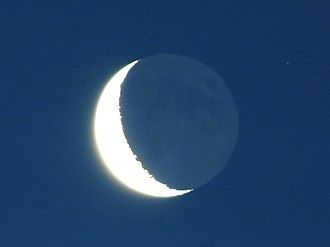
The reason for the pale glow of the Moon is that only a small part, known as the bright sickle, is directly lit by the Sun. The remaining portion of the Moon is illuminated by the sunlight that is reflected off the Earth.
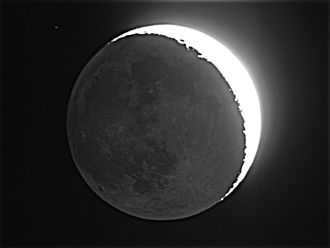
The phenomenon of ash light has been well understood since the time of Leonardo da Vinci and Mestlin [1], who was Kepler’s teacher and first provided a correct explanation for it. Mestlin’s explanation was published in Kepler’s Astronomiae pars optica in 1604, while Leonardo da Vinci’s explanation, given a century earlier, was found in his manuscripts.
In 1850, French astronomers Arago and Logier [2] conducted the first instrumental comparisons of the brightness of ash light and the Moon’s sickle.
After conducting photographic research on the Moon’s ash light at the Pulkovo Observatory, G. A. Tikhov came to the conclusion that when viewed from the Moon, the Earth appears as a disk with a bluish hue. This finding was later proven to be true in 1969 [3]. Tikhov emphasized the importance of conducting regular observations of the ash light in order to study changes in Earth’s climate [4].
Notes
- ↑Mestlin, Mikhail // Encyclopedic Dictionary of Brockhaus and Efron: In 86 volumes (82 vols. and 4 supplements). – St. Petersburg. , 1890-1907.
- ↑Tikhov G.A. Ash light of the Moon // Nature – № 7 – 2010. – C. 78-80.
- ↑Man on the Moon
- ↑Moon’s ashy light conflicts with climate warming
Wikimedia Foundation . 2010 .
Helpful
Discover the meaning of “Ash Moonlight” in alternative dictionaries:
- ASHY MOONLIGHT – a dim radiance on the unilluminated portion of the moon’s surface, facing the Earth (resulting from sunlight reflected first by the Earth and then by the Moon)… Extensive Encyclopedia
- ash light of the moon – a faint gleam on the unilluminated part of the moon’s surface, facing the Earth (resulting from sunlight reflected first by the Earth and then by the Moon). * * * * * * Ash Light of the Moon Ash Light of the Moon, the dim radiance of the Sun-unlit section of the moon’s surface facing the Earth (resulting from sunlight reflected first by the Earth and then by the Moon)… …Comprehensive Encyclopedia
- Ashen Moonlight – a subtle radiance emitted from the unilluminated section of the Moon’s visible disk; observed during new moons, when the Moon takes on the shape of a slender crescent. This phenomenon, known as the Penumbra of Shadows and Light, occurs as a result of the Earth reflecting the sun’s rays onto the Moon’s surface. It is a captivating spectacle that has been documented in various sources, such as the Big Soviet Encyclopedia, the Astronomical Dictionary, and the Natural History Encyclopedic Dictionary.
- ASH – The color of ashes, grayish, like ashes. 1. adjective. resembling ashes (rare). Ashen mass. 2. Having a grayish-gray color, smoky (in terms of color). Hair color that resembles ashes. Hair that resembles ashes. “The light from the candles, the pale faces of the guests appeared to him as pale as ashes.” A.N. Tolstoy. Light that has the color of ash… Ushakov’s Explanatory Dictionary
- Phases of the moon – Sevastopol Avenue in Moscow just after sunset. In the distance, one can see the thin crescent of a young moon, which is showing its curved side to the Sun that has already disappeared behind the horizon. After a short while, it will go below the horizon and… Wikipedia
- The different stages of the lunar cycle. – Sevastopol Avenue in Moscow right after sunset. In the distance, you can see the slender crescent of a new moon, revealing its curved side to the Sun, which has already set below the horizon. After a short period of time, the … Wikipedia
- Stages of the lunar cycle – (also applicable to Mercury and Venus). The ascent begins shortly before the new moon and continues after it; during the first quarter, half of the Moon’s surface is visible; at the full moon, the Earth and Moon are aligned with the Sun, and the entire lunar surface is visible … Astrological Encyclopedia
Why is the dim light of the Moon less intense than the glow of the rest of the Moon visible shortly after the new moon?

Response: Elucidation: The Moon’s ashen hue is a result of the Earth’s light being reflected off of it.
The remaining portion of the Moon, on the other hand, is illuminated by the Sun.

NEED ASSISTANCE?
What is the duration of the journey of light from the Moon to the Earth, given that the distance from Earth to the Moon is approximately 384 million kilometers?
What causes the presence of auroras on Earth but not on the Moon and Mars?
What is the reason behind the existence of auroras on Earth, while they are absent on both the Moon and Mars?

Is the distance from the Earth to the Moon 40,000,000,000?
The distance from the Earth to the Moon measures 40,000,000,000.
If you know the speed of light, you can calculate the time it takes for light to travel from the Moon to Earth.

What is the reason for solar eclipses being annular while lunar eclipses are not?
What is the explanation for solar eclipses being annular while lunar eclipses are not?

Does a lunar eclipse only occur during the new moon or full moon?
Does a lunar eclipse only occur during the new moon or full moon?
1. Is the young Moon (phase to first quarter) visible in the morning or evening?
1. Is the young Moon (phase to first quarter) visible in the morning or evening?
2. Is the old Moon (phase before the new moon) visible in the morning or evening?
What is the reason for the absence of twilight on the moon?
Why does the moon not experience twilight?

Can we assume that the distance from Earth to the moon is 400,000 km?
It is commonly accepted that the distance from Earth to the moon is approximately 400,000 km.
What is the time taken for light to travel from the moon to the Earth?

Why do we only see half of the moon if the earth is round and casts a circular shadow on the moon?
If the earth is spherical and the moon creates a circular shadow, why do we perceive only half of the moon?
What is the reason behind the appearance of a moon reflection on the water’s surface?
What causes the moon reflection to appear on the surface of the water?
If you are looking for an explanation as to why the Moon’s faint light appears dimmer than the rest of the Moon visible shortly after a new moon, specifically at the grade 10-11 level, you have landed on the appropriate page. In the Physics category, you will also discover answers to related inquiries on this subject by utilizing the automatic smart search feature. If, after reviewing all the available answer options, you still have uncertainties or the information provided does not fully address the topic, feel free to create your own question using the button at the top of the page or engage in a discussion with other visitors on this page.

It’s likely to be around 74 degrees.

The position of the upper base of the cone is insignificant. On the side of the lower base, the force mg acts on the table, spread over the area Sa. The only thing that needs to be done is to convert the area into square meters Sa = 4 cm² = 4 / 10000 m² = 0.0004 m² P = mg /.
Because the weight will travel a distance equal to four amplitudes for PERIOD: L₀ = 4 * 3 = 12 cm or 0.12 m, then the number of oscillations: n = L / L₀ = 0.36 / 0.12 = 3 Answer: 3 oscillations.

The value of Q can be calculated by multiplying λ by m, which results in 4 times 330000, equaling 1320000J or 1320 kJ.

The mass of 0.1 kg 100 grams of lead can be found using the formula Q = m * λ, where Q is the solution and λ is the given value.

Velocity (V) is equal to 72 km/h, which is equivalent to 20 m/s. The formula V²/R is used to calculate the centripetal acceleration, where R is the radius. In this case, the centripetal acceleration is equal to 20²/500, which is 0.8 m/s². The net force (N) can be calculated using the formula N = m(g – a), where m is the mass, g is the acceleration due to gravity, and a is the centripetal acceleration. For this scenario, the net force is equal to 500(10 – 0.8), which is 4600 N. If we assume the acceleration due to gravity to be 9.8 m/s², then the net force would be 4500 N.

In the equation 0, 3 * m1 = N * 0, 2, we can solve for N by dividing both sides by 0, 2. This gives us 0, 1 * N = 0, 3 * M m1. Simplifying further, we find that N = 2M M. Finally, if we substitute the given value of M = 1, 2 kg, we can solve for N. Therefore, N = 2 * 1, 2 kg, which equals 2, 4 kg.

Working with vectors can be more challenging than working with projections because displacement, velocity, and acceleration are all vector quantities.


